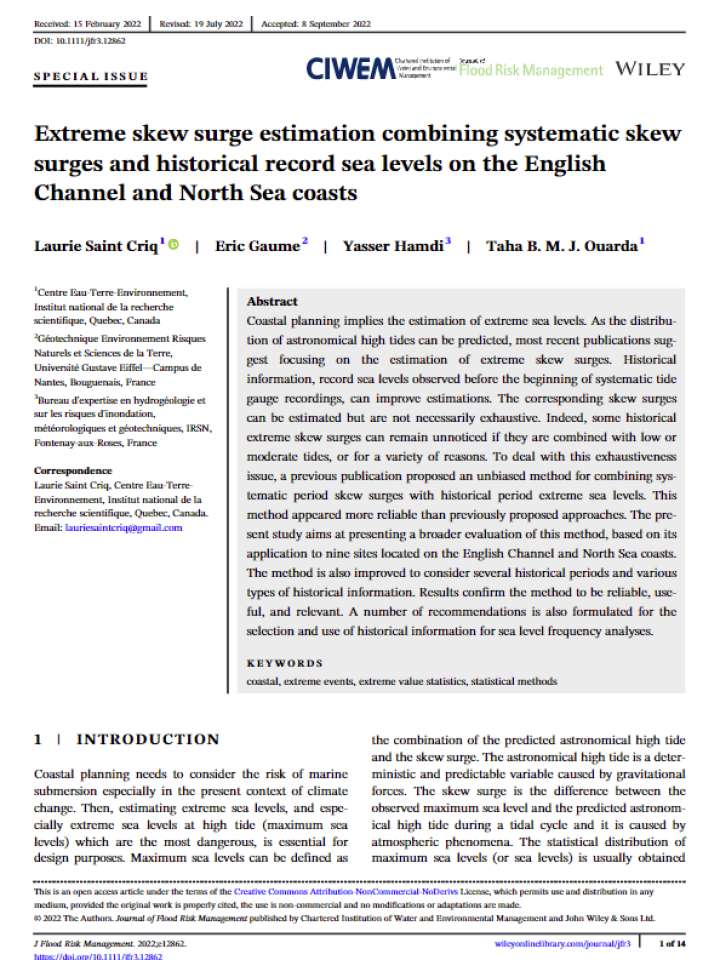Extreme skew surge estimation combining systematic skew surges and historical record sea levels on the English Channel and North Sea coasts
Coastal planning implies the estimation of extreme sea levels. As the distribution of astronomical high tides can be predicted, most recent publications suggest focusing on the estimation of extreme skew surges. Historical information, record sea levels observed before the beginning of systematic tide gauge recordings, can improve estimations. The corresponding skew surges can be estimated but are not necessarily exhaustive. Indeed, some historical extreme skew surges can remain unnoticed if they are combined with low or moderate tides, or for a variety of reasons. To deal with this exhaustiveness issue, a previous publication proposed an unbiased method for combining systematic period skew surges with historical period extreme sea levels. This method appeared more reliable than previously proposed approaches.
The present study aims at presenting a broader evaluation of this method, based on its application to nine sites located on the English Channel and North Sea coasts. The method is also improved to consider several historical periods and various types of historical information. Results confirm the method to be reliable, useful, and relevant. A number of recommendations is also formulated for the selection and use of historical information for sea level frequency analyses.
Explore further

